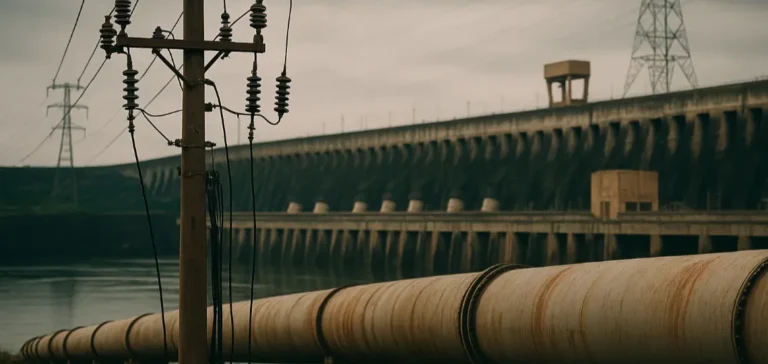The Brazilian Electricity Regulatory Agency (Agência Nacional de Energia Elétrica, Aneel) has officially concluded its first tender exclusively dedicated to small and medium-sized hydroelectric power plants. The recently closed operation mobilizes approximately 5.5 billion reais, or nearly 1 billion dollars in investments, across a total of 65 projects.
The total allocated capacity amounts to 815 megawatts (MW), with each plant limited to a maximum of 50 MW, in line with the imposed technical criteria. These units will be deployed across various regions of the country, offering greater flexibility in their connection to the national grid.
Contractual Terms and Operational Timeline
The contracts signed under this procedure will be valid for 20 years. According to the schedule set by authorities, the plants must begin supplying electricity starting in January 2030. This deadline gives operators sufficient time for technical and financial preparation, while enabling long-term grid planning.
The Ministry of Mines and Energy of Brazil stated that this initiative contributes to diversifying the country’s hydropower capacity. By relying on medium-scale facilities, the government aims to integrate these assets more effectively into regions with growing energy demand.
Government Outlook and Territorial Dimension
During a public address, Minister of Mines and Energy Alexandre Silveira noted that this development model is based on a logic of territorial adaptation. He highlighted the importance of minimizing environmental constraints in sensitive regions while maintaining consistent supply standards.
Silveira also mentioned the potential return of larger-scale projects under a bilateral framework. In this regard, he confirmed ongoing discussions with Bolivia concerning the Madeira River dam in the Amazon region—a project with transboundary implications.
Sectoral Constraints and Historical Context
Following the commissioning of the Belo Monte project, large dams were temporarily excluded from Brazil’s national energy strategy due to legal and social opposition. This pause led to the growth of alternative energy sources and a renewed focus on smaller hydroelectric installations.
The launch of this new auction reflects a hybrid approach, aiming to maintain hydropower’s contribution to the national energy mix while meeting stricter regulatory demands. The financial interest expressed by operators indicates renewed attractiveness for this segment.
2026 Forecasts: Thermal and Hydropower Auctions
The Brazilian government has announced preparations for two new auctions in 2026, which will include thermal power plants running on coal, oil, or natural gas, in addition to new hydroelectric projects. The stated objective is to ensure dispatchable capacity as intermittent renewable sources increase their share in the energy mix.
According to information published in the Official Journal, the operational schedule includes the launch of public consultations in the last quarter of 2025. This phase will establish the regulatory and technical frameworks before selecting eligible projects in the first quarter of 2026.
Eligibility Parameters and Expected Bidders
The specifications for the upcoming auctions explicitly exclude hybrid or renewable technologies. Only installations relying exclusively on fossil fuels will be accepted. This measure aims to ensure stable production capacity, independent of weather conditions.
Leading energy groups have already expressed interest. Expected bidders include Petróleo Brasileiro S.A. (Petrobras), Eneva S.A., and Ambar Energia. These companies possess the expertise needed to develop large-scale thermal power plants within the country.
Strategic Context Ahead of COP30
Despite international climate commitments, Brazilian authorities maintain a pragmatic approach focused on supply security. Short- and medium-term energy planning continues to rely on dispatchable technologies, justified by network constraints.
Brazil will host the United Nations Climate Change Conference (COP30) in November 2025. While this event draws international attention, national energy decisions remain primarily guided by internal technical and economic considerations.






















